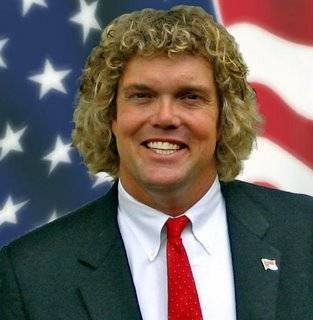The Economist is taking a look at the unpleasantness that is the U.S. fiscal situation, and it finds most Americans ready to cut government spending. In fact, when asked whether to cut spending or raise taxes, we chose cutting spending by a 62% to 5% margin (with the other 33% unwilling to commit).
Unfortunately, people don’t want to cut spending on things that we actually spend money on. Check out this comparison from my favorite political science blog, The Monkey Cage:

What is clear from the graphic is that the vast majority of Americans are eager to slash all of that foreign aid we shell out. The problem is, we don’t actually spend much on foreign aid. Many are also willing to gut environmental protection spending, but that doesn’t seem like a very big target, either (though government spending isn’t the same as spending on environmental compliance; then again, spending on compliance doesn’t add to the public debt).
Perhaps we will just inflate the debt away instead.

 Duke University Political Economist
Duke University Political Economist Would a tax on the sugary, em, I mean the corn syrupy sweet taste of soft drinks reduce consumption? And would that in turn cause young people to drink less and possibly curb the tide of childhood obesity? An
Would a tax on the sugary, em, I mean the corn syrupy sweet taste of soft drinks reduce consumption? And would that in turn cause young people to drink less and possibly curb the tide of childhood obesity? An 

 Welcome back to campus. With the new term comes an all new and improved Economics TeaBA. This term promises to offer more beverages, more insight, more excitement than all of the prior terms of economics TeaBA combined.
Welcome back to campus. With the new term comes an all new and improved Economics TeaBA. This term promises to offer more beverages, more insight, more excitement than all of the prior terms of economics TeaBA combined. Before I catalog my notes on the last section of the book, The Sage, I’d like to simply point out some excellent resources that have helped me to put Schumpeter’s work in context. Indeed, that is one of the main challenges for economists today, I think, is what was genuinely important about Schumpeter’s work and what wasn’t.
Before I catalog my notes on the last section of the book, The Sage, I’d like to simply point out some excellent resources that have helped me to put Schumpeter’s work in context. Indeed, that is one of the main challenges for economists today, I think, is what was genuinely important about Schumpeter’s work and what wasn’t. This is a continuing live blog for
This is a continuing live blog for  I’m sure that I am not the only member of the
I’m sure that I am not the only member of the  The Economist is hosting an
The Economist is hosting an